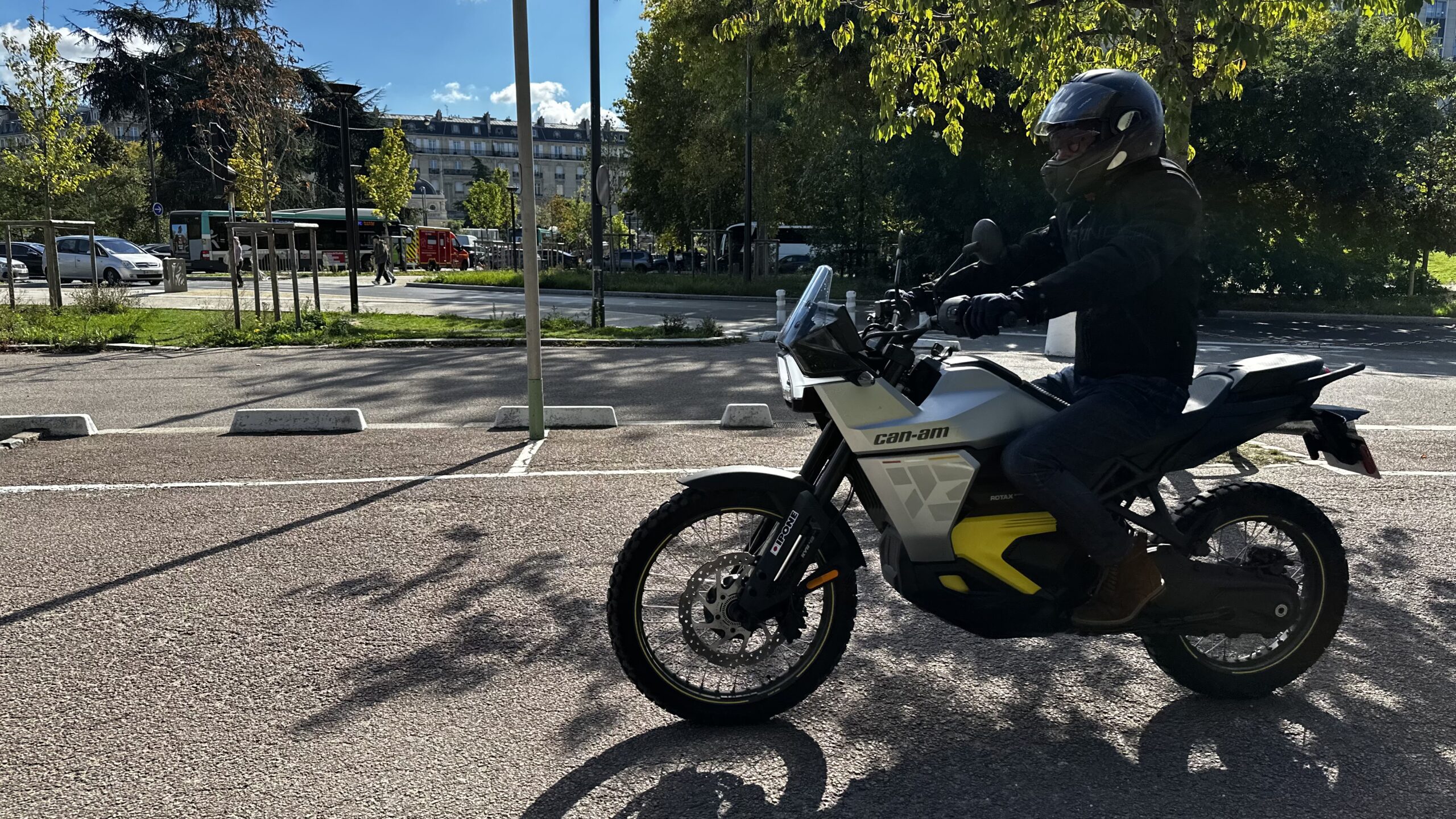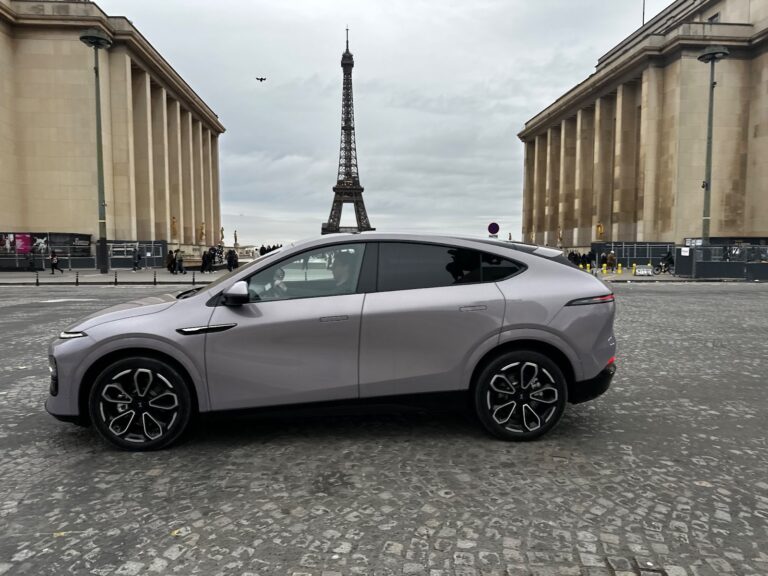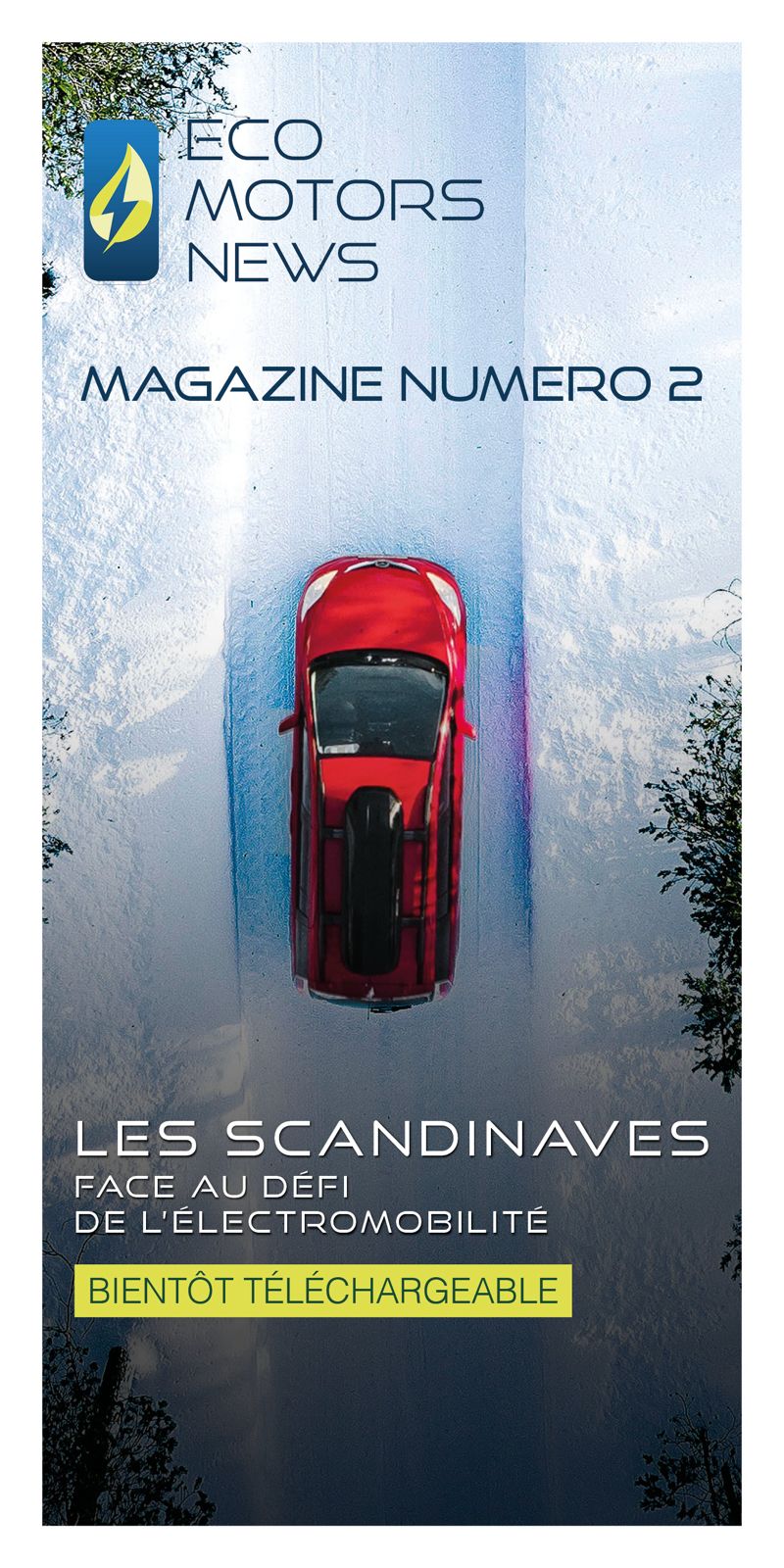ECO MOTORS NEWS had the opportunity to try out two models from the brand’s new electric era: the Can-Am Origin 2025 and the Can-Am Pulse 2025. At the end of two comprehensive tests, find out more about the different features of these two-wheelers.
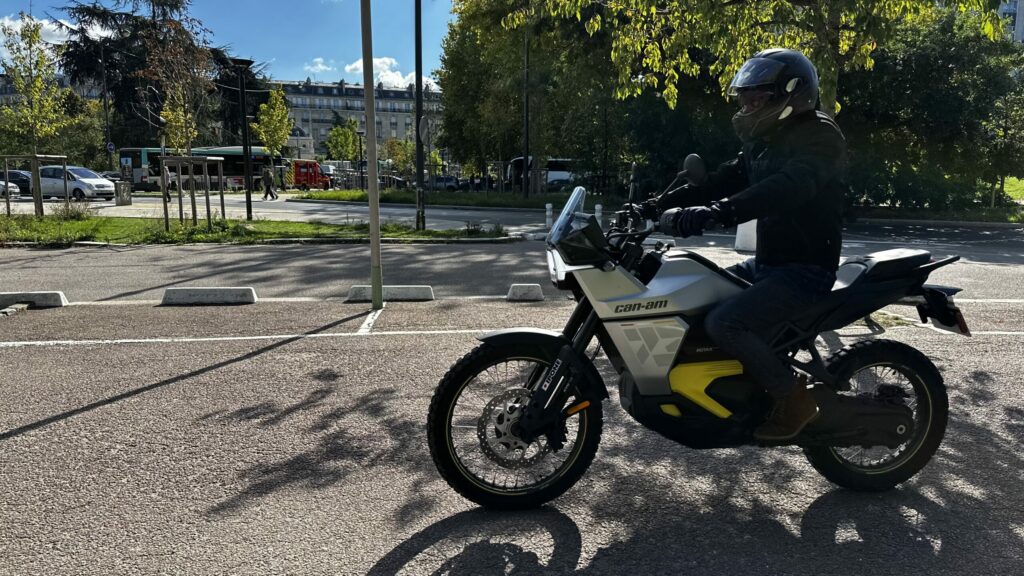
The Can-Am brand was born in the 1970s under the Bombardier banner, with motorbikes and off-road vehicles designed for competition. It established itself as a major player in enduro racing before losing ground to Japanese manufacturers.
It was from the 2000s onwards that the brand experienced a rebound. It continued to expand its catalogue, from traditional off-road two-wheelers to side-by-side bikes and three-wheelers designed for the road. Now Can-Am has turned its attention to electric two-wheelers. But it will be a while before we see them on the roads of France. So we decided to test not one, but two Can-Am models aimed at specific urban and suburban uses: the Origin, designed for versatility, and the Pulse, more focused on city use.
This is our chance to draw up a comparison based on what we feel at the wheel of these top-of-the-range electric machines, which have swapped Canada for the cobbles of Paris, the ring road and the main roads near the capital.
Can-Am Origin 2025
The first bike I tried out was the Origin, the electric trail model with a distinctive look. And from the very first moment, I quickly understood why Can-Am presents it as a versatile bike, suitable for the road but also, and above all, for off-road riding. Spiked wheels, a rugged silhouette, a dirt bike look… it has all the hallmarks of an enduro bike and celebrates the glorious years of the brand from across the Atlantic, hence the name ‘Origin’.
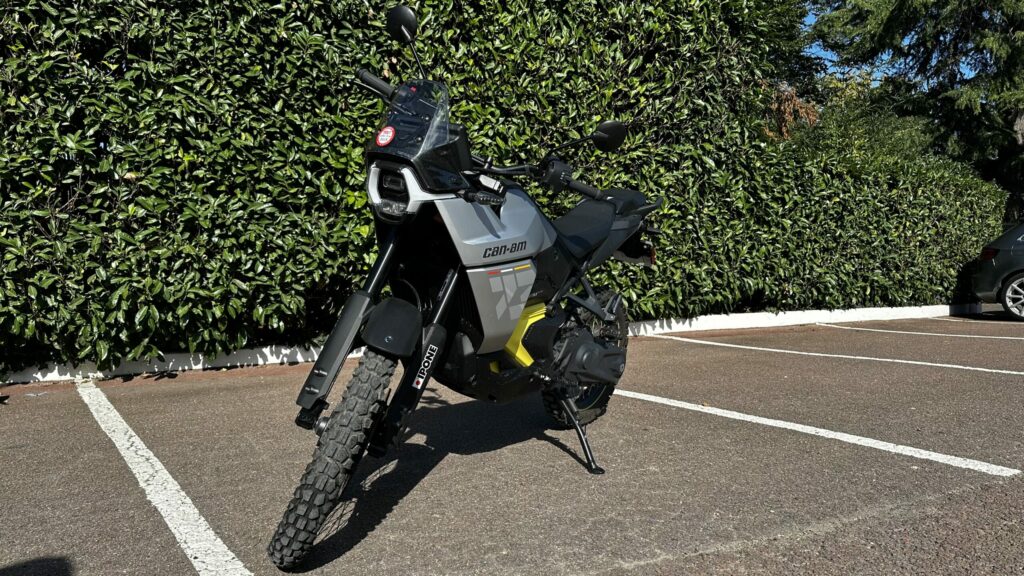
Once I was settled in, the curved seat, which follows the shape of the frame, gave me a high and comfortable position, albeit a little narrow and firm for me. What you want with a bike of this size (2.2 metres long and 0.86 metres wide) is to be agile and easy to handle. And on this point, the manufacturer scores a point thanks to the positioning of the battery, integrated into the chassis. This lightened the overall weight of the car and improved its agility, enabling me to weave my way between cars with ease in the city and on the Paris ring road (which was very busy at the time).
In the same test environment, I still felt rather vulnerable to other road users, especially when I was driving between lanes, as the loaned model was not fitted with crash bars (although it was possible to include them). What also disappointed and bothered me was the absence of hazard warning lights… When driving between lanes and in a warning situation, this is annoying.
After the city and the Paris ring road, I took to the motorway. True to motorised electric vehicles, this Can-Am picks up speed immediately, and I had no trouble getting into the car. At 110 km/h, it remains stable, but protection against the wind is limited at this speed, as the windscreen fitted as standard on my bike was not large enough and did not protect me sufficiently.
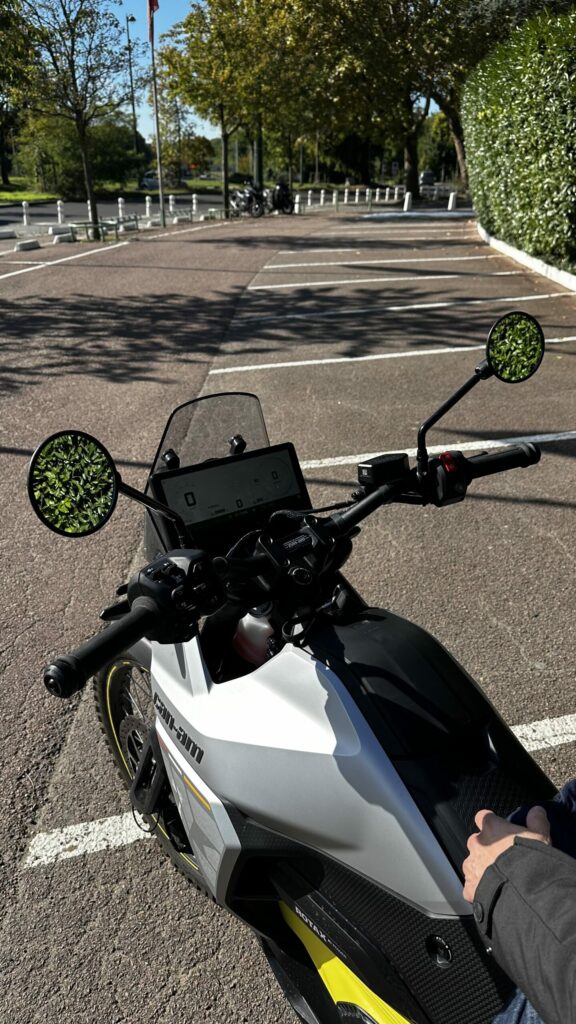
In terms of powertrains, the test model is powered by the 35 kW (47 hp) ROTAX E-POWER engine, which delivers lively, almost too direct and brutal acceleration, with a 0 to 100 km/h time of 4.3 seconds. One of the most pleasing features, symbolic of electric vehicles, is the regenerative braking, which is particularly successful on this model. There’s also a nod to reverse gear, which is efficient and practical for parking in town. As for the range, it is claimed to be 145 km in town and 115 km in mixed use, values that are true to reality in the light of my test drive.
Vehicle information is displayed on a 10-inch touchscreen. Compatible with Apple CarPlay, its interface is clear and intuitive, the controls responsive and the ergonomics well thought out. This motorbike has a sober yet modern design and is made from quality materials. Personally, I wasn’t particularly impressed by its aesthetics. The design will appeal above all to those who prefer functionality to originality, because what it does, it does well.
Can-Am Pulse 2025
The second bike I took in my hands was the Pulse, and there was a change of scenery. Lower but more compact, it clearly adopts the codes of the urban roadster. Its design is more aggressive, and it blends more easily into the cityscape than its Origin sibling. From the first few metres, I could feel that the riding position was different: sportier, more compact, but also more welcoming, especially on longer journeys. The seat is well thought out, even if it’s still firm and too narrow for my liking.

In town, the Pulse is a pleasure to drive. What struck me once again was the liveliness of the electric motor. Handling is good, but it doesn’t perform as well as its companion, no doubt due to the different driving position. On paper, this model is faster than the Origin; in fact, the Pulse is faster, even though it’s equipped with the same 35 kW (47 hp) motor, with a 0 to 100 km/h time of 3.8 seconds, a difference made possible by its weight: 177 kg compared with 187 kg for the Origin!
On the ring road, overall, the Pulse offers the same driving quality but also the same shortcomings… Less agile than the Origin but still responsive, the Pulse remains at ease in tight spaces. This time round, I was less bothered by the absence of crash bars, probably because of the different driving position, but I’m not kidding myself: safety isn’t optimal. Acceleration is still too brutal for my liking, and there’s no middle ground, which can make the car difficult to handle when starting from a standstill. And like the Origin, there’s no possibility of activating the hazard warning lights (a real brake in my opinion). However, like the Origin, the regenerative brake is present, but it’s less linear than on the Origin. It takes a little getting used to, but it’s still effective and enjoyable. For this version of the Canadian brand, the advertised range is 160 km in town and 130 km in mixed use, and on my test drive, these figures seem consistent.

I had the same impression on the motorway: immediate acceleration, pleasant and adapted to the speed, but it was very windy if I wasn’t in a fully reclined driving position. The absence of a windscreen (which is understandable given the design) is still palpable.
The 10.25-inch touchscreen is the same as on the Origin: clear, responsive, Apple CarPlay compatible and well integrated into the cockpit. The interface is more streamlined, in keeping with the spirit of the Pulse: simple, straightforward, with no frills.
From an aesthetic point of view, it plays the sober urban card. No flashy details, just a coherent, modern design that will appeal to those looking for a discreet but well-built motorbike. Personally, I find it a little lacking in visual character, despite the little touches of flashy yellow, but it makes up for it in efficiency.
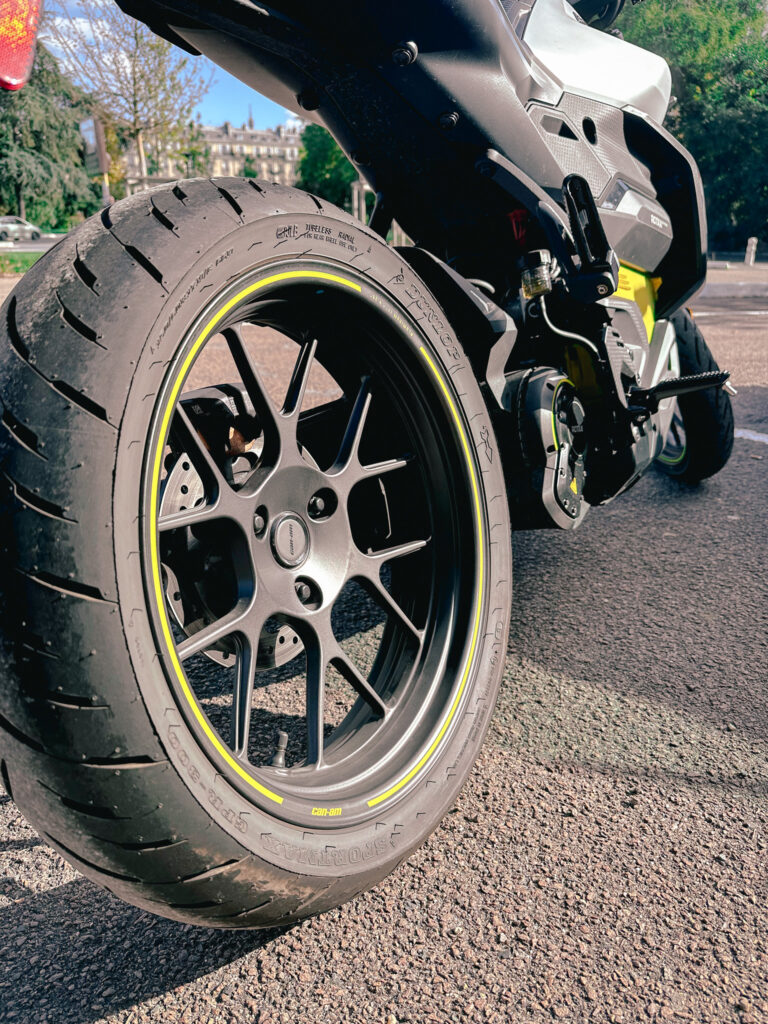
In brief
At the end of these tests, it’s hard not to applaud the change of direction taken by Can-Am. With the Origin and Pulse, the Canadian brand is making a serious and credible entry into the electric two-wheeler market. The Origin seduces with its versatility and its electric trail temperament, capable of tackling the city as well as the open road, while the Pulse assumes a more urban positioning, compact and practical.
While not everything is perfect, particularly in terms of safety equipment and comfort, Can-Am is demonstrating that its historic expertise in powerful, robust vehicles can be successfully transposed to the world of zero-emission vehicles. However, the price of these models remains high, which may put off some potential buyers: the Origin starts at €13,799, while the Pulse starts at €12,999, prices that clearly position them in the premium segment.

